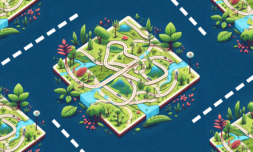Reef Design Lab based in Melbourne uses locally sourced oyster shells mixed with concrete to build structures that reduce coastal erosion and support marine wildlife.
Along the shore of Port Phillip Bay in Australia, large dome-shaped modules sit submerged just below the water’s surface.
Though they resemble large sand dollars at first, these structures have been man-made by the Reef Design Lab in Melbourne. They were constructed using a blend of concrete and ground-up oyster shells, with the aim of reducing erosion occurring along Australia’s coast.
Many places around the world are witnessing an increase in coastal erosion. The consequences are wide-ranging, including the loss of homes and businesses, as well as damage to infrastructure and agricultural production.
When coastal erosion increases the amount of sediment in oceans, it can pollute rivers and other streams, causing disruption to natural marine life and vital water reserves.
Though significant episodes of coastal erosion are typically associated with extreme weather events, the process is also driven over time by strong waves and currents, as well as mass wasting processes on slopes and land subsidence.
Thanks to the team at Reef Design Lab, a sustainable and eco-friendly mitigation strategy is seeing success along Australia’s coastlines. Let’s take a look at their creative process.























